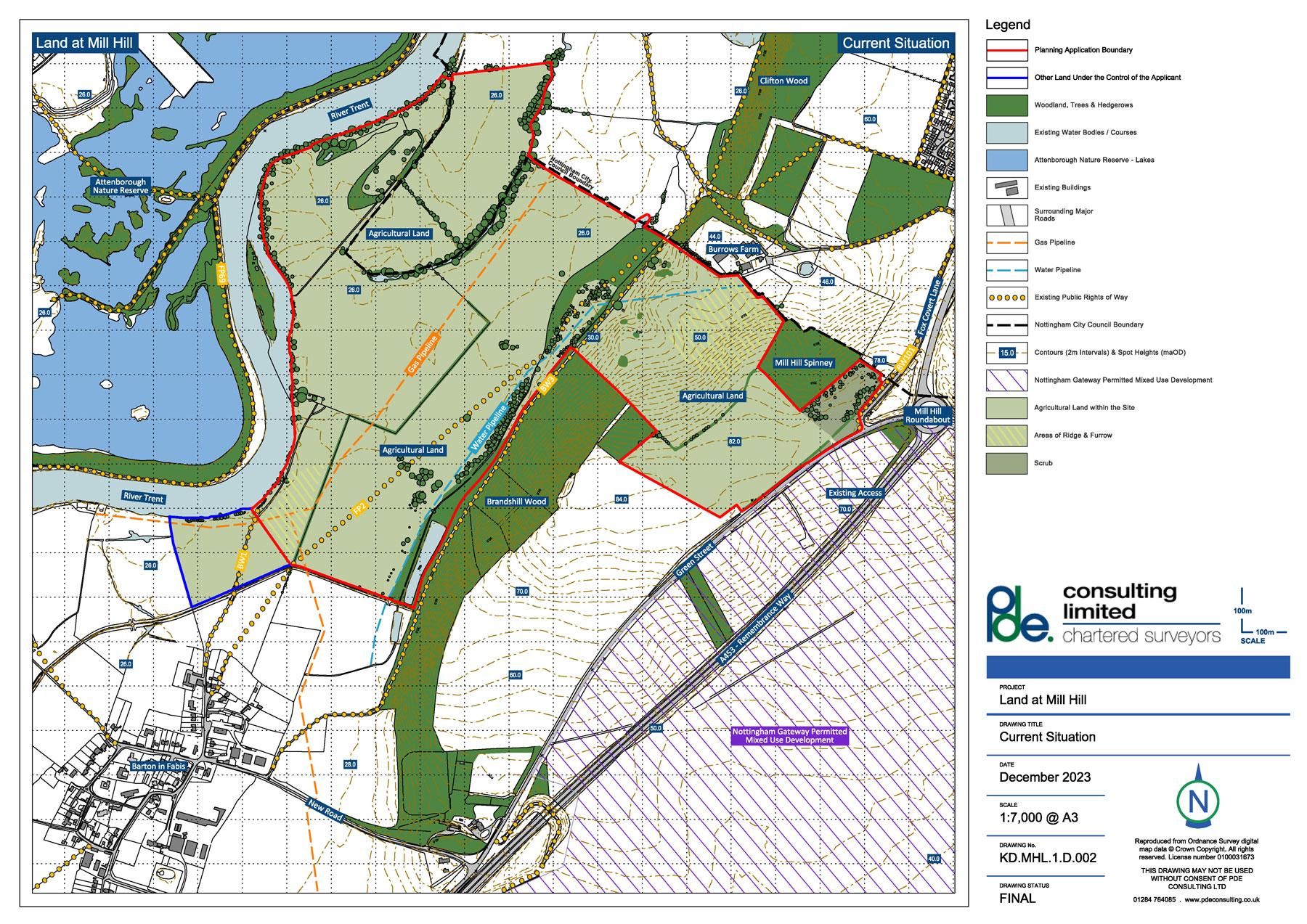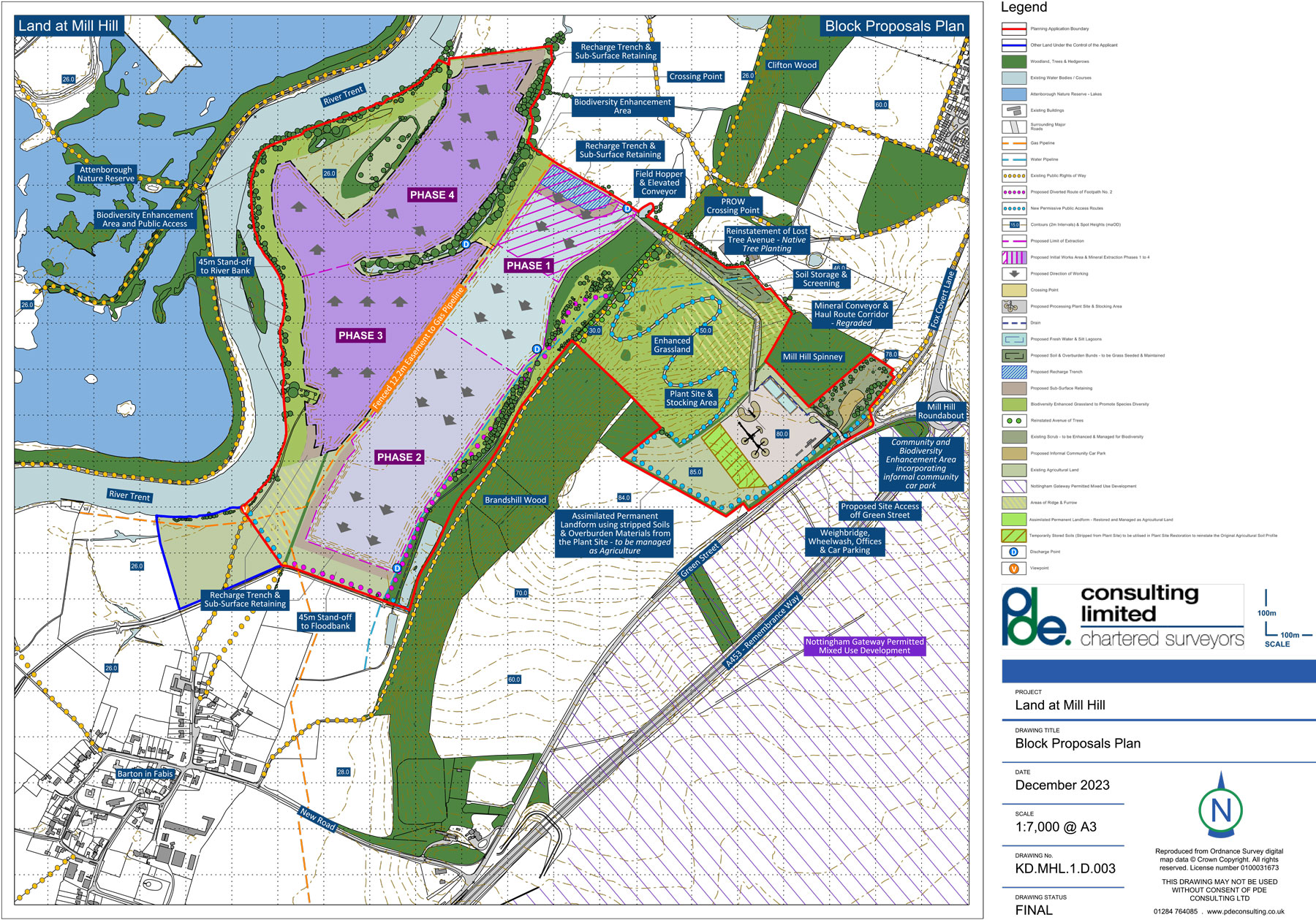Essential local materials
Aggregates like sand and gravel are essential for everything in our built environment, from new housing and community facilities to places of work and leisure, and the infrastructure for transport, energy and water.
Demand for aggregates is expected to remain strong and so reserves need to be replenished by new sources to meet demand. The UK Mineral Products Association (MPA) reports that currently, for every 100 tonnes of sand and gravel used, only 63 tonnes are permitted for future extraction (see MPA Annual Mineral Planning Survey 2022).
Importantly, the most efficient way to meet the continued demand for new minerals – both economically and environmentally – is to source them close to where they are needed in construction, minimising the distances and vehicle miles they have to be transported.
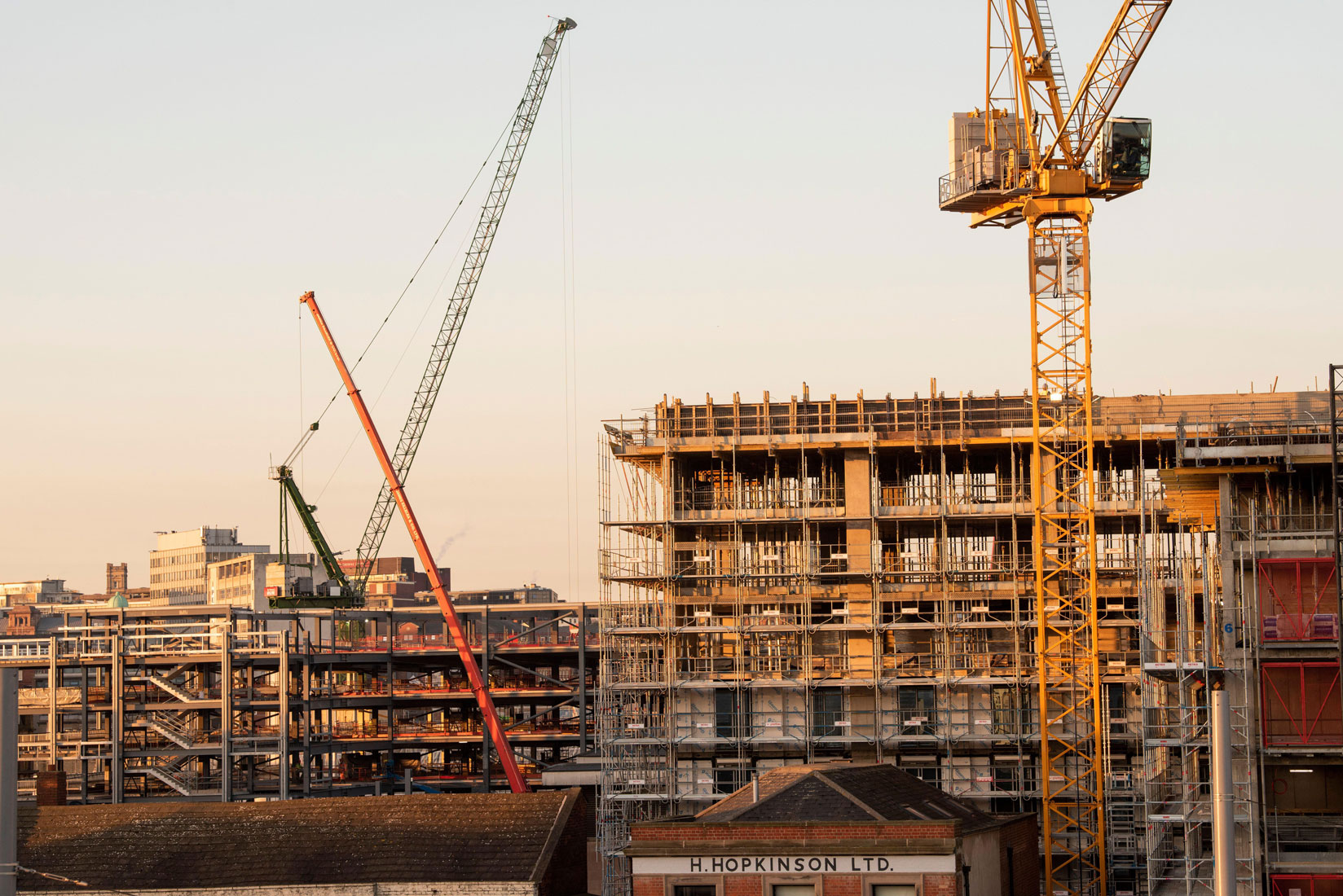
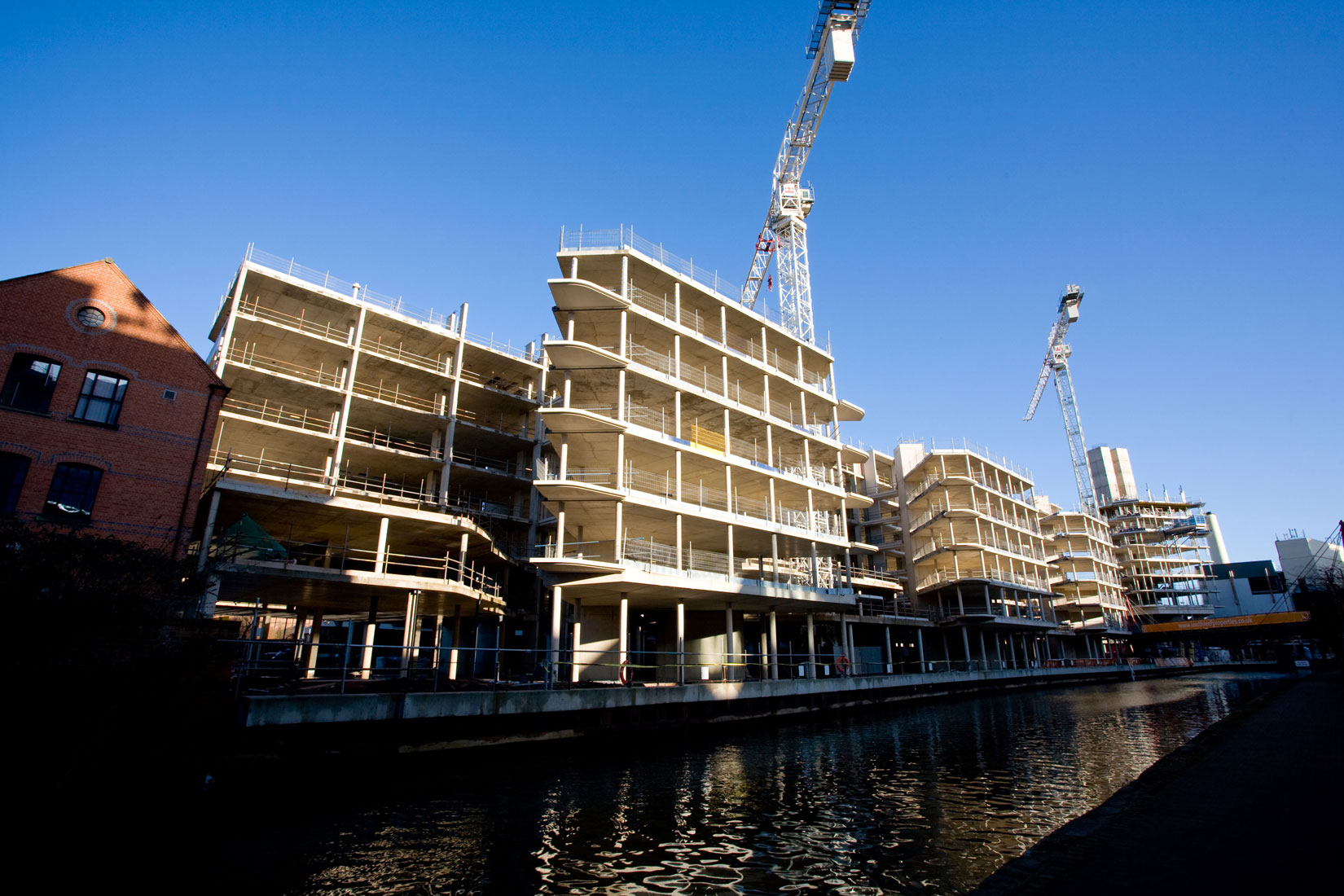
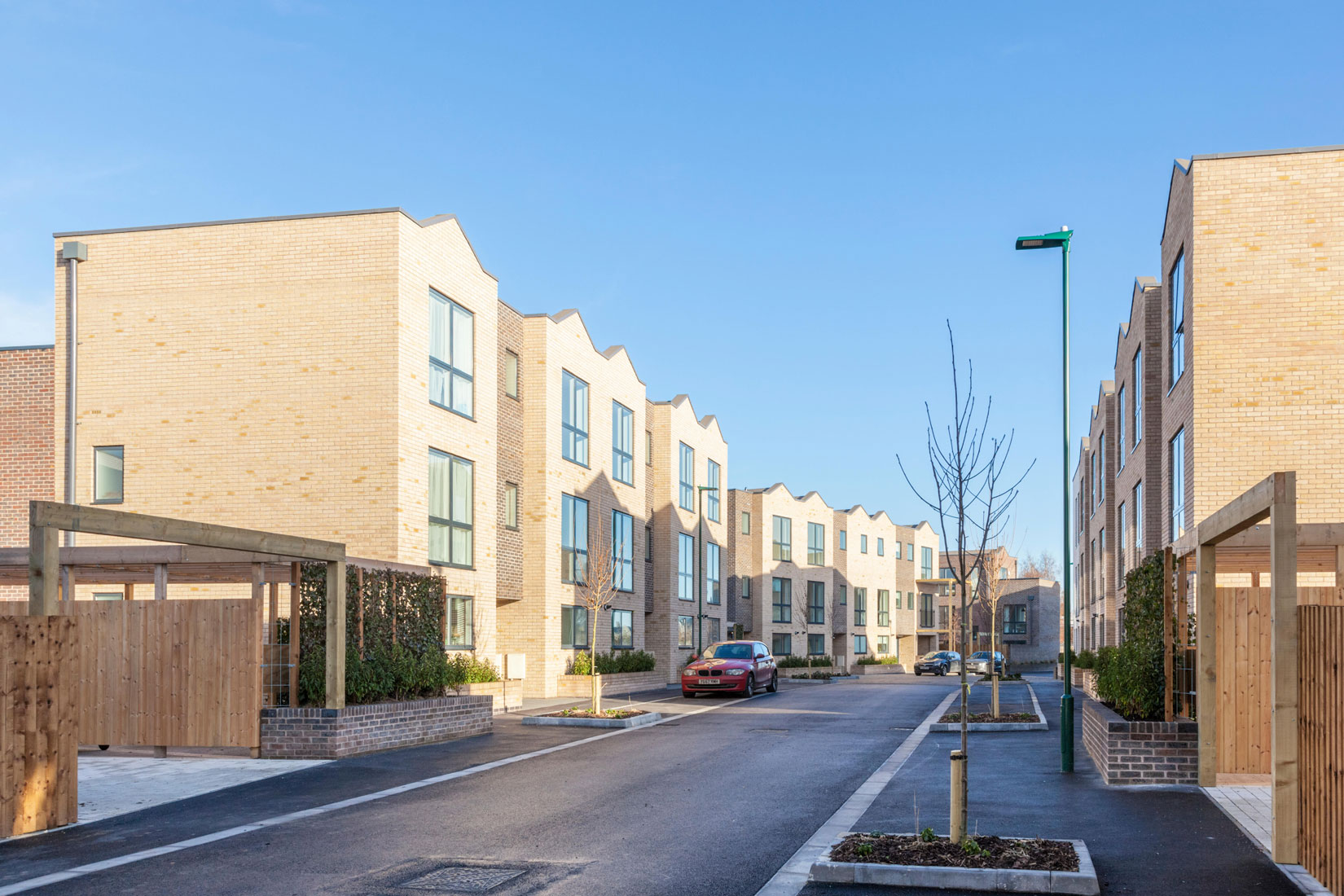
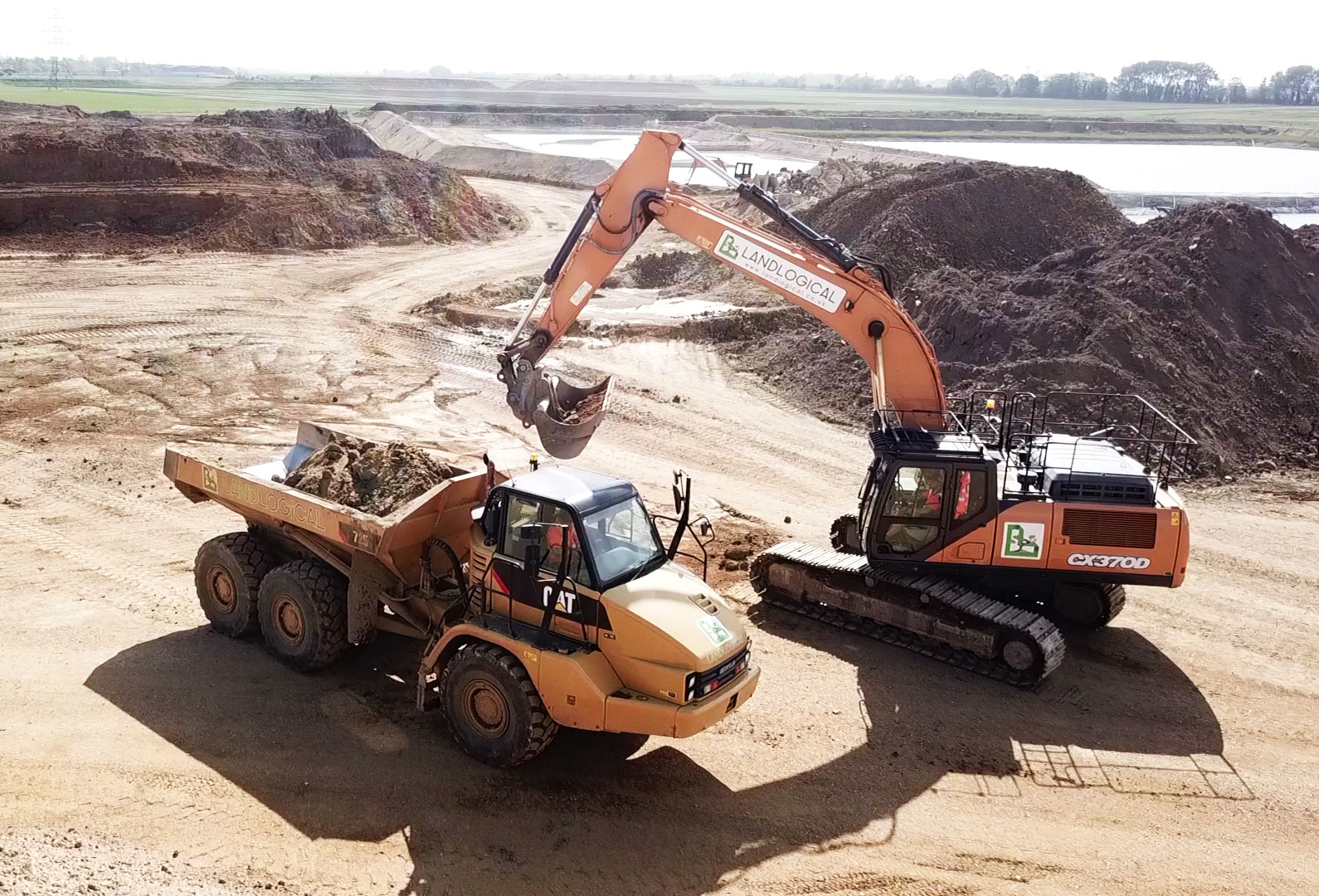


Sand and gravel in Nottinghamshire
Nottinghamshire’s most recent Local Aggregates Assessment acknowledges that whilst aggregate mineral resources are present close to Nottingham city, the opportunities to extract these minerals is limited due to the built-up nature of the area. Therefore, most aggregates consumed in the city have to be supplied from elsewhere in Nottinghamshire or further afield. Our proposal, which includes land in Nottingham city, would provide 500,000 tonnes of materials from within the city’s own administrative boundary.
A supply of aggregates on the city’s doorstep will help to ensure materials for local construction are supplied as efficiently as possible with the fewest vehicle miles and lowest possible carbon footprint.
The same Local Aggregates Assessment also acknowledges that whilst Nottinghamshire’s landbank is currently above the 7-year requirement, further reserves will be needed over the life of the county’s adopted Minerals Local Plan period (to 2036) to ensure a steady and adequate supply of aggregates to meet demand. These further reserves are to come from the allocated sites within the current Minerals Local Plan which includes Mill Hill.
NOTE: Around a third of the UK’s aggregate demand is already met by recycled materials, and reuse of construction waste to produce recycled aggregates is close to its maximum in most parts of the country (see MPA 2023 report on Recycled & Secondary Aggregates). As a consequence, there continues to be a need for newly quarried sand and gravel as proposed at Mill Hill.
Trent Valley Geology
The Trent Valley has been an important source of sand and gravel for generations, used to build the region’s towns and cities, facilities and infrastructure. Like all minerals, sand and gravel can only be extracted where they are naturally deposited beneath undeveloped land such as the land at Mill Hill, Barton in Fabis.
Test drilling on the flood plain near Barton in Fabis indicates that the thickness of the mineral deposit ranges from around 2 metres in some places to 7 metres in others.
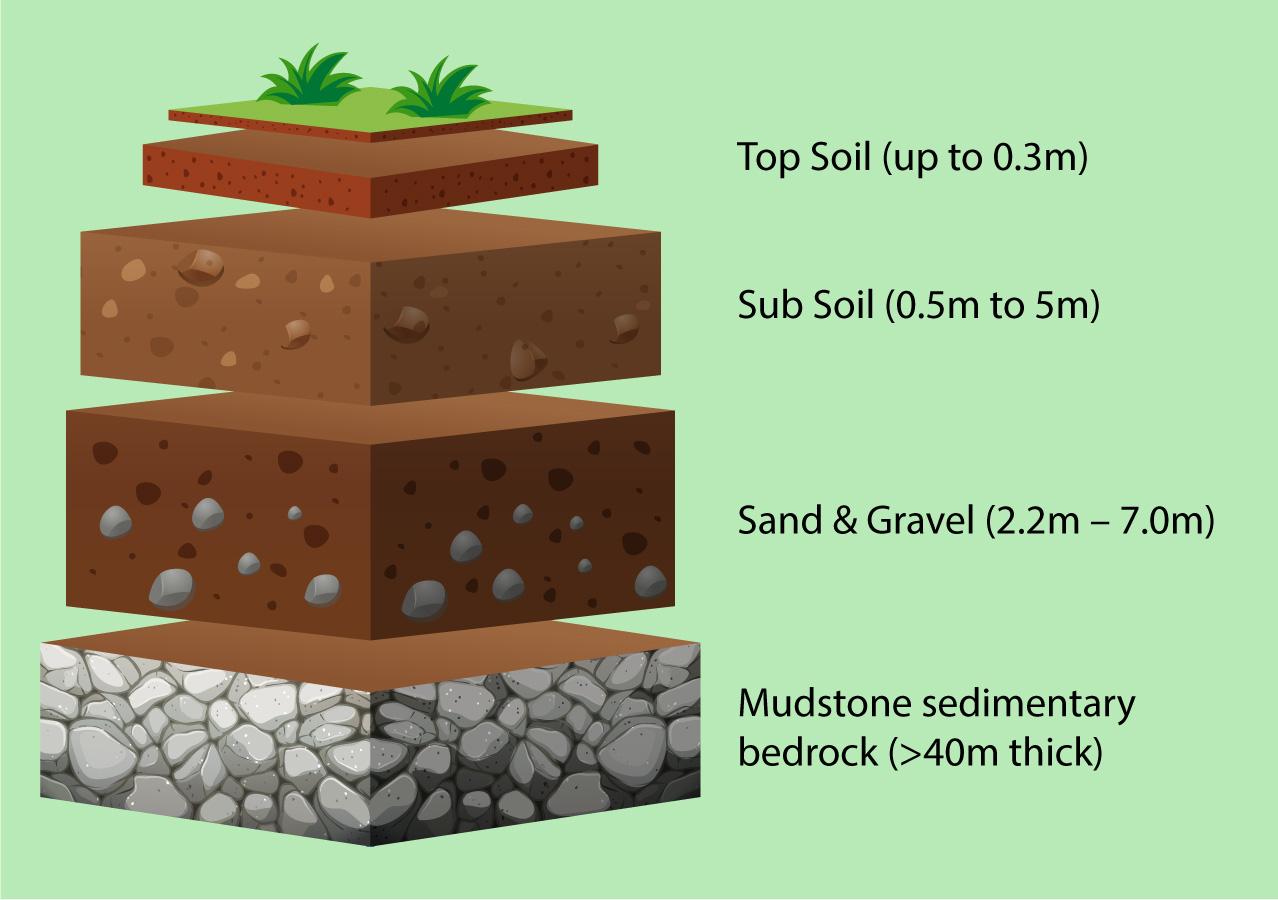
* Illustration of geological layers in this part of the Trent Valley (not to scale)
About the proposed site
The site for the proposed quarry is an area of land on the eastern bank of the River Trent, between Barton in Fabis (to the south west) and Clifton Village (to the north east). The proposed area for extraction is more than 250 metres from the nearest houses at Barton in Fabis.
The majority of the site is currently used for farming although it’s considered generally to be of poor-to-moderate quality, while the remainder is not formally managed. The area within the floodplain is land that has been drained by previous generations for farming and there is even evidence of historic quarrying activity going back as far as the 15th century.



Contribution to the local economy
The quarry would provide full-time employment for 16 people in different roles throughout the duration of its operation. Land Logical is committed to creating sustainable job opportunities that will benefit the local economy and so the recruitment of local workers will be prioritised, along with workplace opportunities for young people.
In addition to direct employment, the proposed development would also support jobs in other sectors that depend on minerals, as well as the purchase of goods and services in the local area. This site would also make a substantial annual tax contribution in the form of Non-Domestic or Business Rates and Aggregates Levy.
Introducing our proposal
The planning application boundary is indicated in red on the plan. The total land area is 85 hectares although in our proposal less than half of this area would actually be quarried (see phasing plan below).
There are two distinct areas of land involved in our planning application. The western parcel of land, which forms part of the flood plain, is the ‘extractive area’ from which sand and gravel will be sourced. The eastern parcel, which is alongside Green Street, is where materials would be processed, stored and despatched from to supply the local construction market.
The proposal is carefully designed to align with national and local planning policy, and any potential impacts will be mitigated or eliminated as outlined in the comprehensive suite of environmental reports which are a key part of our planning application. These are summarised in our section on Environmental Considerations.
Proposed timescale
The quarry development would involve the removal and processing of around 2.5 million tonnes of sand and gravel over approximately 10 years. With the additional up-front preparation time and final landscape restoration the site would be active for around 12.5 years.
This is based on forecasted demand for aggregates. Removal of the sand and gravel would take place over a series of four phases to minimise the area of land that is exposed at any one time and allow for progressive restoration (ie restoring quarried land as we go).
After the 12.5 year period we are committed to to a long-term restoration and aftercare scheme which could be secured via planning conditions. This would ensure that the new landscape continues to thrive and delivers a long-term legacy of biodiversity and social net gain.
Site preparation
Once an improved site access has been established onto Green Street, the first work would be the creation of the plant site area and conveyor/haul route down to the floodplain. We would then complete the initial works on the floodplain to allow extraction and restoration operations to begin.
This involves removing soils and storing them to be used for restoration purposes as soon as we can. During this time our ecologists will be on hand to ensure we minimise the chances of any disturbance to wildlife. Archaeologists will also provide a watching brief should any artefacts or other evidence be revealed.
And we would, of course, endeavour to minimise any disturbance to people as well, so we propose to divert a short section of footpath on to ‘bridleway 3’ which we will bridge over with our proposed conveyor. This conveyor will be fully enclosed as it passes over the bridleway and will be built in accordance with British Horse Society guidance (2019).
In summary, everything we do will be in accordance with local and national guidelines and we are committed to providing real and tangible benefits to the local community and wildlife from the very outset. That is why we are proposing to establish almost three kilometres of new permissive paths and bridleways, and why we will be taking on board the management of large tracts of land to improve their wildlife and biodiversity potential.
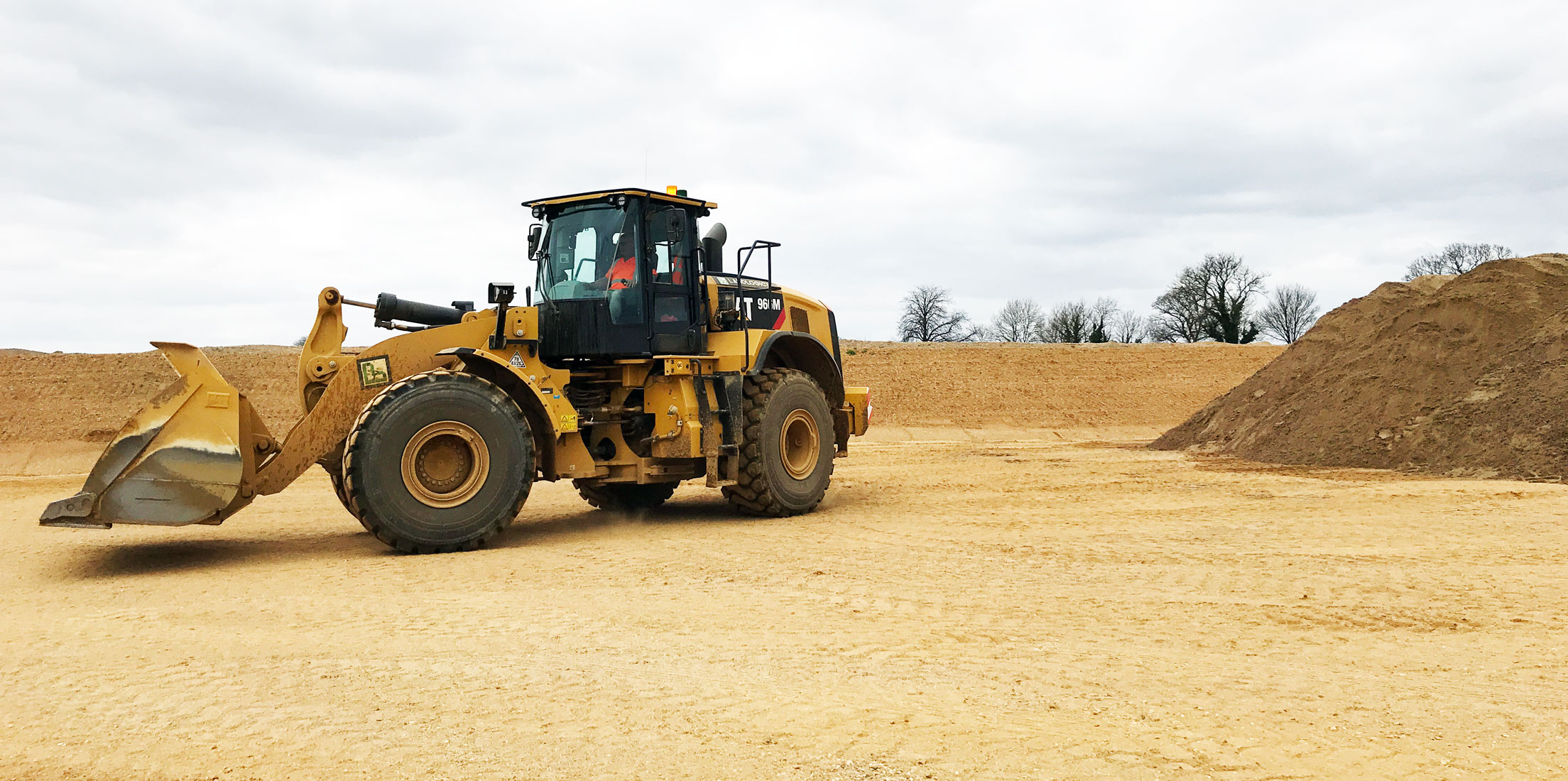
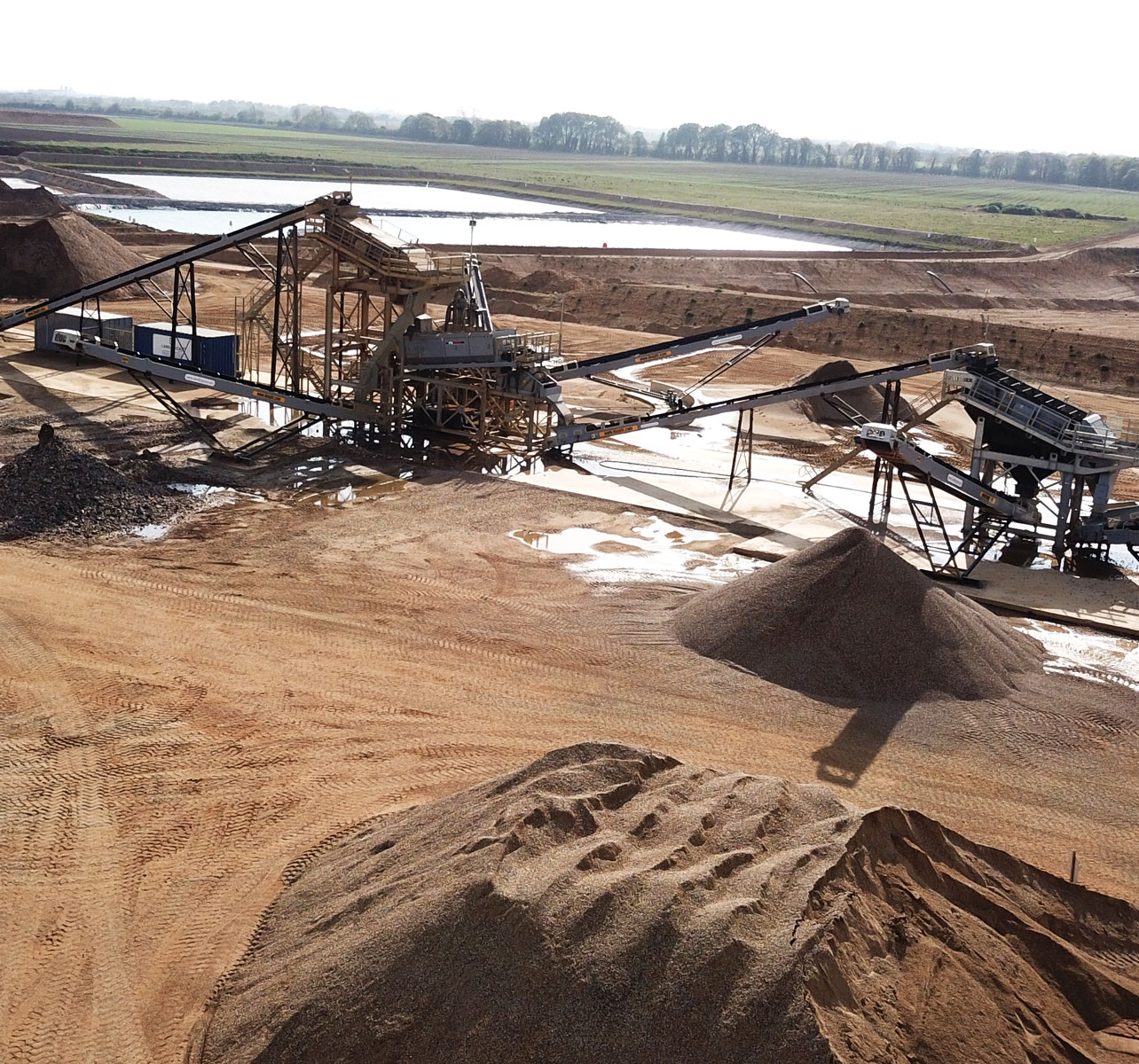
Extraction & Processing
Once the soils are removed from a particular area of the site, the sand and gravel deposits would then be extracted by excavator over a number of phases in sequence (see phasing plan). The ‘as dug’ material would be loaded onto dump trucks and transferred a short distance to a field hopper at the start of the conveyor belt. The conveyor carries the material up Brands Hill to the processing area for washing and grading into different sizes to meet specific construction and landscaping needs.
The different grades of material – from soft sand through to pebbles – would then be loaded onto lorries. These vehicles would pass over a weighbridge and through a wheel wash (to prevent any material from going onto the public highway) and distribute the sand and gravel to the local construction market.
Operating hours
Our planning application will seek permission to operate during the following hours:
- Monday to Friday – 0700 hours to 1800 hours
- Saturday – 0700 hours to 1300 hours
- Sundays & bank holidays – no activities
These are the maximum operating hours proposed and this does not necessarily mean that work on site would take place continuously during these times; there will inevitably be busier and quieter times in a typical week, and extraction of the sand and gravel will usually be seasonal, with activities through the year.

Progressive restoration
As sand and gravel is extracted, each phase of the proposed quarried area would be progressively restored, using the indigenous soils that were taken off to reveal the sand and gravel. The landform on the site would be shaped in line with the restoration plan which is designed to enhance the area for both biodiversity and social gain.
For further details see the Restoration page.
